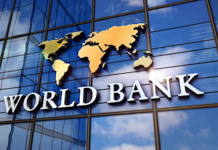by Amal Mohy
After three weeks of China’s devaluation of the Yuan, the Chinese economy continues to shrink. Last week on Black Monday, the Shanghai Composite Index of Stocks dropped 16 per cent, and in the past three months, the Index had fallen about 40 per cent. Although the Chinese stock market is not a real indicator of the Chinese economy — since only one in 30 Chinese citizens own stocks — the plunge of Shanghai Composite Index has a broader impact across global stock markets. However, what concerns global economies more is China’s slow growth.
With China representing roughly 17 per cent of the world’s overall GDP in 2014, such a severe slowdown in its giant economy affects every country in the world. According to The Guardian, China’s overall imports have declined this year by 14.6 per cent.
The impact has been sharp on Australia, which lost about $25.20bn, representing about 1.7 per cent of its GDP. In other words, China’s imports from Australia have fallen by 25.8 per cent. Australia’s main exports to China include raw materials like ores and iron as well as oil. Similarly, New Zealand has lost about $3.54bn, accounting for about 1.9 per cent of its GDP. Its main exports to China include dairy products, wood and meat.
The emerging Asian economies have been also hurt by the Chinese slowdown. Japanese sales decreased by $18.08bn (0.4 per cent of its GDP). Japan’s huge manufacturing sector was particularly affected; namely machinery, precision machinery and cars among others. South Korean export sales fell by $13.88bn (1.0 per cent of its GDP). Like Japan, machinery, precision machinery and organic chemicals are the most affected industries. Indonesia has lost about $6.64bn, representing about 0.7 per cent of its GDP. Its most affected industries include energy, soy and agricultural goods, ores, chemicals and wood pulp. India lost about $3.76bn, accounting for only 0.2 per cent of its GDP. India’s exports to China are mostly cottons, precious metals, copper, ores and organic chemicals. Singapore’s sales have slumped by $2.16bn (about 0.7 per cent of its GDP); affecting the oil and gas, plastics and machinery sectors. Malaysian export sales to China have declined by $2.1bn, accounting for about 0.6 per cent of its GDP and having a significant impact on the energy and machinery sectors.
African countries have also suffered from the shrinking Chinese imports. Angola has lost about $4.54bn, accounting for more than 3 per cent of its GDP. The oil and gas sectors have been the largest losers in Angola. The currency of South Africa has been plunging sharply, and fell by 8 per cent last week. The devaluation of the yaun has decreased demand for African goods in general since they are paid for in dollars and consequently Chinese traders withdraw such expensive goods.
As for Europe, it has been less affected, with the exception of Germany and Russia, which benefit from the world’s biggest car market and the world’s largest oil consumer. Germany’s export sales have declined by $14.17bn, representing only about 0.4 per cent of its GDP. Germany’s main exports to China are cars, machinery, and precision machinery. Meanwhile, exports from Russia have contracted by $8.66bn (about 0.5 per cent of its GDP); particularly oil and gas as well as wood. Less affected countries include the UK, which lost about $3.17bn; France with a $2.45bn fall in exports; and Italy with a $1.98bn decrease in exports. Each of these countries has lost about 0.1 per cent of their GDP.
Losses were more painful for Latin America. Brazil’s exports to China have dropped by about $12.2bn, accounting for 0.5 per cent of its GDP, with a shrink in its economy of 1.9 per cent. The Brazilian currency has tumbled as result. Brazilian leading exports include agricultural products, ores, iron as well as gas and oil. Chile, Peru and Columbia are also struggling with the same economic woes.
Although the US export sales have decreased by $11.99bn, the loss is not really felt as it is just about 0.1 per cent of its GDP. Canada, meanwhile, has lost about $3.68bn.
All in all, world economies need to adjust to what Xi Jinping, China’s president, has called “a new normal”. The bright side of China’s economy is that its pillars are still resilient. The slowdown of China and the emerging countries may nonetheless put more pressure on developed countries as the current drive for economic growth.















